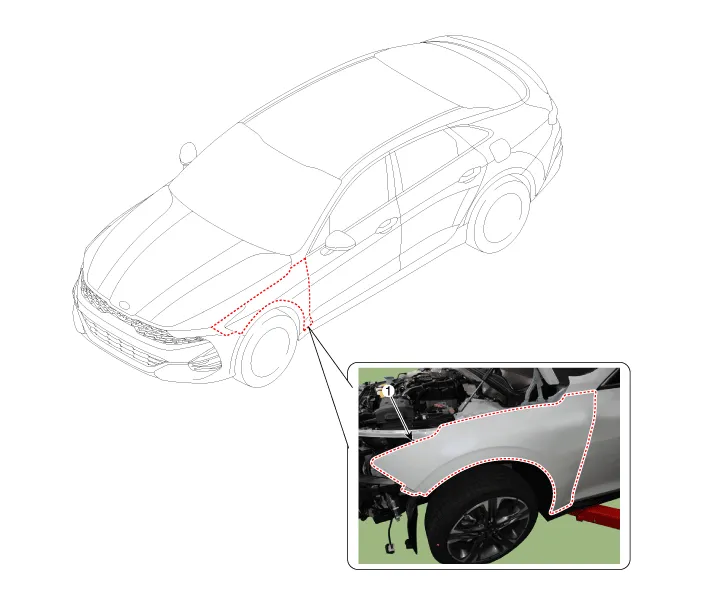Kia Optima DL3: Body (Interior and Exterior) / Fender
Components and components location
| Component Location |

| 1. Fender assembly |
Repair procedures
| Replacement |
|
| 1. |
Remove the front bumper assembly. (Refer to Front Bumper - "Front Bumper Assembly") |
| 2. |
Remove the head lamps. (Refer to Body Electrical System - "Headlamps") |
| 3. |
Remove the side seal molding. (Refer to Body Side Molding - "Side Sill Molding") |
| 4. |
Remove the front wheel guard. (Refer to Body Side Molding - "Front Wheel Guard") |
| 5. |
Loosen the mounting screws and remove the front bumper side mounting bracket (A).
|
| 6. |
Loosen the mounting bolts and remove the fender panel (A).
|
| 7. |
To install, reverse the removal procedure.
|
Service data Service Data Items Specification Hood Type Rear hinged, gas lifter type Front Door Construction Front hinged, frame door construction Regulator system Wire drum type Locking system Pin-fork system Rear Door Construction Front hinged, frame door construction Regulator system Wire drum type Locking system Pin-fork system Trunk Lid Type Front hinged Seat Belts Front 3 point type with Emergency Locking Retractor (E.
Repair procedures Adjustment 1. After loosening the hinge (A) mounting bolt, adjust the hood (B) by moving it up and down or from side to side and tighten the bolt.
Other information:
Kia Optima DL3 2019-2025 Service and Repair Manual: Integrated Memory Seat (IMS) Switch
Schematic diagrams Connector and Terminal Function Repair procedures Removal When prying with a flat-tip screwdriver or use a prying trim tool, wrap it with protective tape, and apply protective tape around the related parts, to prevent dam
Kia Optima DL3 2019-2025 Service and Repair Manual: Personal Lamp
Repair procedures Removal When removing with a flat-tip screwdriver or remover, wrap protective tape around the tools to prevent damage to components. 1.
Categories
- Manuals Home
- Kia Optima Owners Manual
- Kia Optima Service Manual
- Automatic Transaxle System
- Steering System
- Rear Combination Lamp
- New on site
- Most important about car




